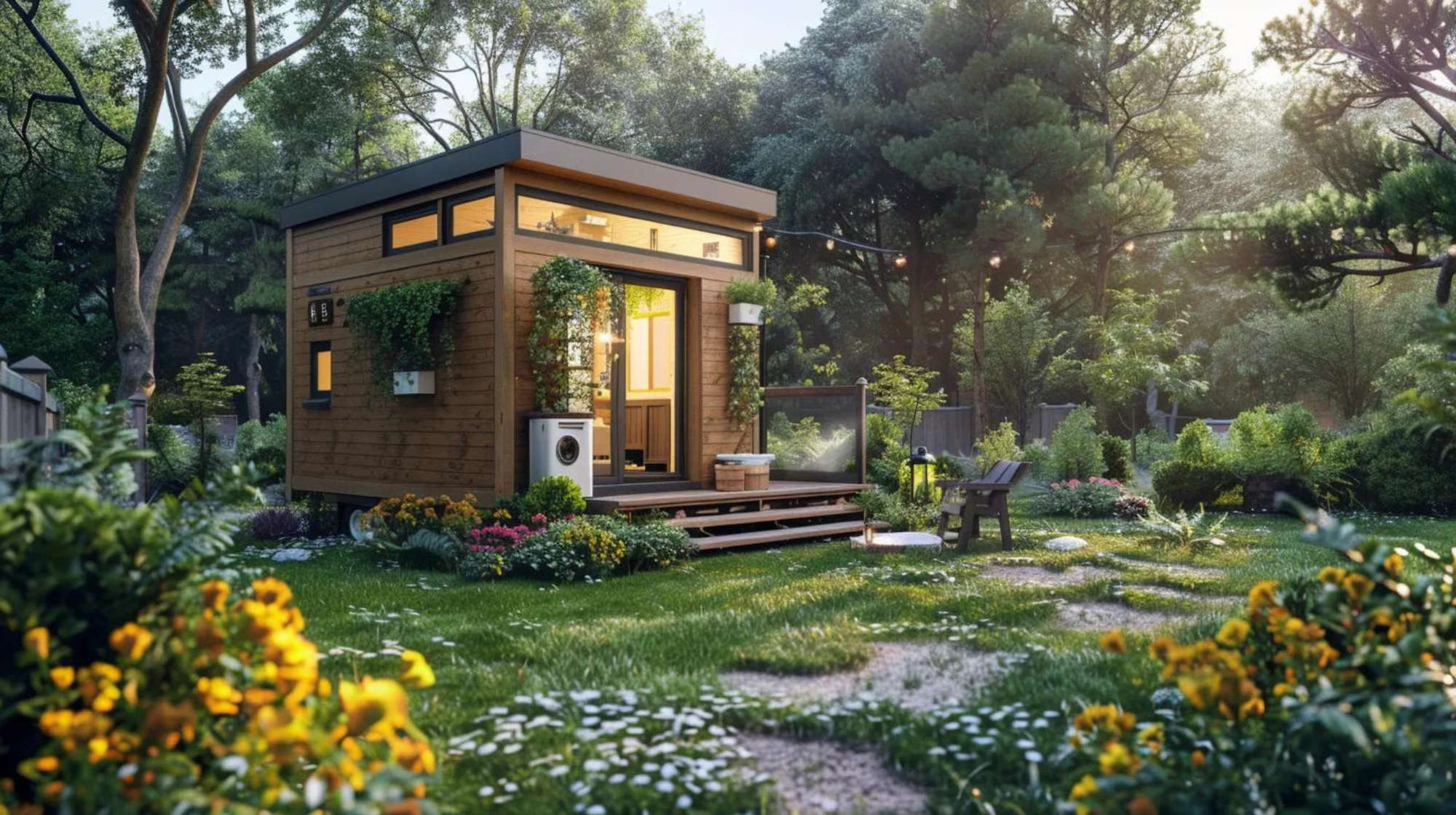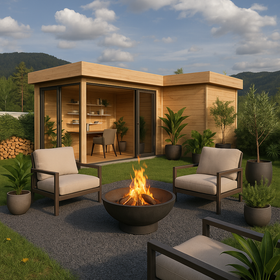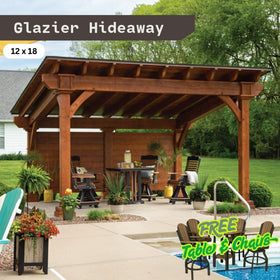512-777-0154

Which Side of House is Best for Your Garden?
Ever wondered which side of your house is best for your garden?
The short answer: the south side. It gets sunlight from morning till evening, giving plants exactly what they crave.
But before you run for your shovel, there’s more to it than just sunshine. Each side of your house offers a different vibe, from cool and shady to bright and blazing. Let’s dig into what makes every direction unique and how to make your garden thrive no matter where it sits.
The Best Answer: Understanding Garden Aspect and Sunlight
Your garden’s “aspect” is simply the direction it faces. It might sound technical, but it’s actually the secret behind happy plants.
Once you know how the sun moves, you can plan where to plant everything without guesswork.
The Core Factor: Why Direction Dictates Sunlight Hours
The sun rises in the east and sets in the west. That’s why the south side of a house gets the most daylight in the Northern Hemisphere. It’s bathed in sunshine for most of the day, while north-facing areas sit in shade.
East-facing gardens get soft morning light that fades by afternoon. West-facing gardens light up later in the day, great for sunsets but harsh on heat-sensitive plants.
Understanding these patterns helps you choose plants that love their spot instead of fighting against it.
How to Determine Your Garden's Aspect Accurately
Finding your garden’s aspect is easy.
Grab a compass or open the compass app on your phone. Stand with your back to your house and face the garden. The direction you’re facing tells you everything: north, south, east, or west.
Knowing this saves you from years of frustrated planting.
South-Facing Gardens: The Highly Sought-After Sun Trap
South-facing gardens are the golden ticket of gardening. They’re sunny, warm, and full of life.
For people who love growing vegetables, flowers, or just soaking up the light, this is prime real estate.
Advantages: Maximum Sunshine, Plant Variety, and Property Value
With the sun most of the day, you can grow almost anything, like tomatoes, roses, herbs, lavender, and even citrus trees in warm areas. The soil warms quickly in spring and stays productive longer into autumn.
A bright, healthy garden also adds value to your property. Buyers often see sunny outdoor spaces as an extension of the home. It’s not just a patch of green, it’s an outdoor living room bathed in light.
Disadvantages and Management: Battling Heat and Dry Soil
Too much of a good thing can still cause trouble.
South-facing gardens dry out quickly and may struggle in midsummer heat. The soil can turn hard and thirsty if left unwatered.
Mulch helps retain moisture, while drip irrigation systems make watering easier. Adding taller plants or Structureworks Williamsburg Fiberglass Pergola can also give delicate plants a break from the midday glare.
North-Facing Gardens: Embracing the Cool and Consistent Shade
Not every garden needs full sun to shine.
North-facing gardens have a calmer, cooler personality. They’re a peaceful escape on hot days and ideal for plants that prefer life out of the spotlight.
Conditions and Microclimate: Cooler Temperatures and Reliable Shade
These gardens stay shaded for most of the day.
They might not suit tomatoes or peppers, but they create a microclimate that stays moist and steady. During summer, you might still get a touch of gentle evening sun, perfect for winding down after a long day.
Best Plants for North-Facing Spaces
Shade-loving plants thrive here. Think ferns, foxgloves, hydrangeas, hostas, and astilbes. They enjoy cool roots and filtered light.
Add texture and contrast with evergreens or mossy ground covers, and you’ll have a lush green oasis even without direct sun.
East-Facing Gardens: The Bright Morning Retreat
East-facing gardens catch the day’s first light, then cool off after lunch. They’re one of the easiest orientations to manage, offering the best of both worlds: brightness without the burn.
Morning Sun, Afternoon Shade: A Balanced Environment
Morning sunlight is soft and nurturing. It helps plants dry after dew and avoids the harsh afternoon rays that can wilt tender leaves.
This balance makes it perfect for both ornamental and edible plants that like moderate light.
Best Uses: Breakfast Nooks and Cool-Season Crops
An east-facing garden is the perfect place for a small breakfast nook or patio. You can sip your coffee while the sun rises and your plants soak in the same glow.
Grow cool-season crops like lettuce, spinach, kale, and peas. They’ll thank you for the gentle light and mild temperatures.
West-Facing Gardens: Strong Afternoon and Evening Light
West-facing gardens come alive later in the day. They’re warm, bright, and often bursting with color by evening. But that late-day light can be intense, so it’s all about choosing the right plants.
Dealing with Intense Late-Day Sun
From noon to sunset, these gardens heat up fast.
The soil can dry out, and tender plants may suffer. Use mulch to keep roots cool and choose hardy varieties like dahlias, black-eyed Susans, and ornamental grasses. Deciduous trees also help, giving shade in summer but letting light through in winter.
Best Uses: Evening Entertaining and Relaxation
If you love being outdoors after work, a west-facing garden is a dream. It’s made for barbecues, outdoor kitchens, evening dinners, and warm sunsets. Add string lights, a fire pit, or a small deck, and it becomes your favorite spot to unwind.
Other Critical Factors for Garden Success
While direction sets the stage, success depends on more than just sunlight. Every garden has its quirks: windy corners, soggy patches, or surprise shadows that shift through the seasons.
1. Microclimates, Obstructions, and Shade Mapping
Tall fences, wooden sheds, and neighboring trees all change how light hits your garden. Take a day to note when and where shadows fall. This “shade map” helps you position plants perfectly, keeping sun-lovers happy and shade plants protected.
2. Soil, Drainage, and Wind Direction
Healthy soil is the foundation of every great garden.
Check what type you have, clay, sandy, or loamy, and adjust it with compost or sand to improve structure and drainage.
Keep an eye on wind, too. Strong gusts dry out soil and damage plants, so use hedges or fences as windbreaks.
3. Water Proximity, Convenience, and Accessibility
Your garden’s success also depends on convenience.
Place it near a water source to make watering easy. Rain barrels are a great option for collecting water naturally. The closer and easier it is to maintain, the more consistent your care and the happier your plants.
The South Side is Best, But Any Side Can Be a Great Garden
Yes, the south side takes the crown for most sunlight and flexibility. But the truth is, any side can grow beautifully if you work with its strengths.
North-facing gardens offer cool, calm. East-facing ones bring gentle mornings. West-facing gardens glow at sunset. Every direction has its own charm.
With a little planning and creativity, your garden, whatever its aspect, can flourish. Sun or shade, it’s all about understanding your space and letting nature do the rest.








